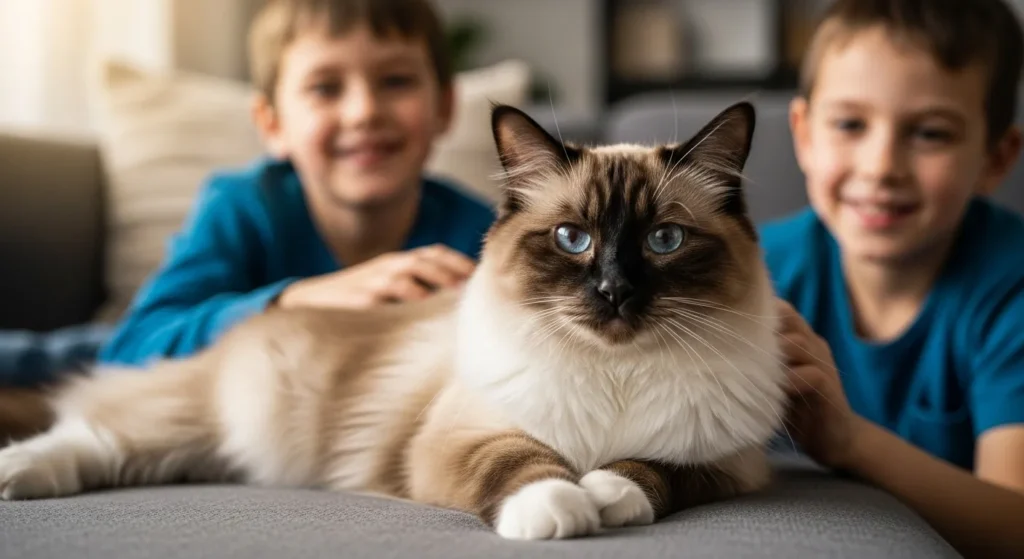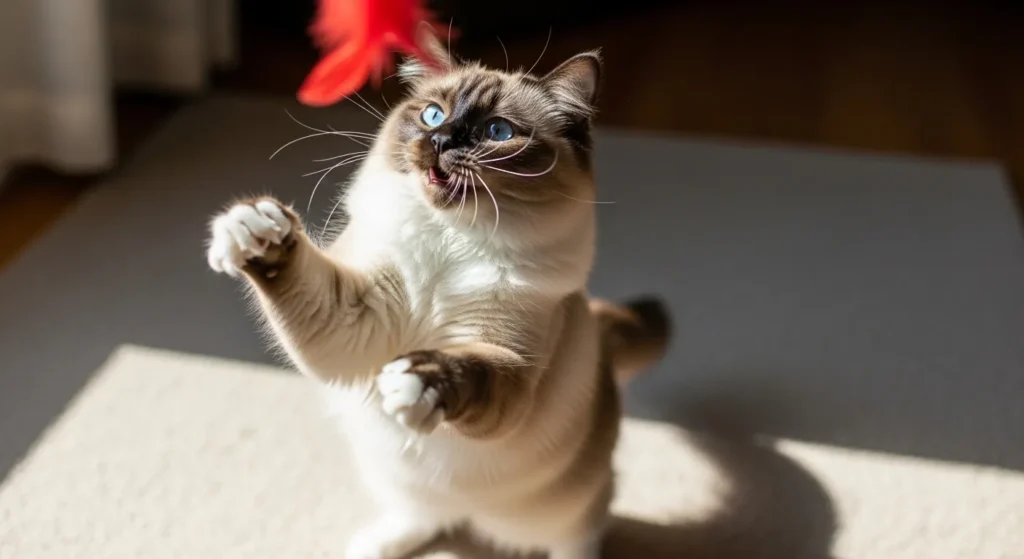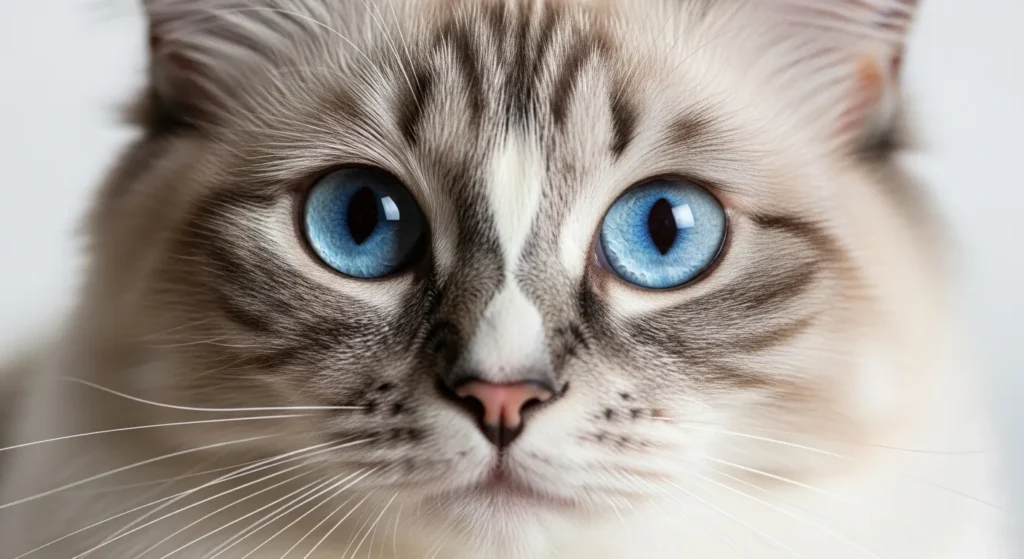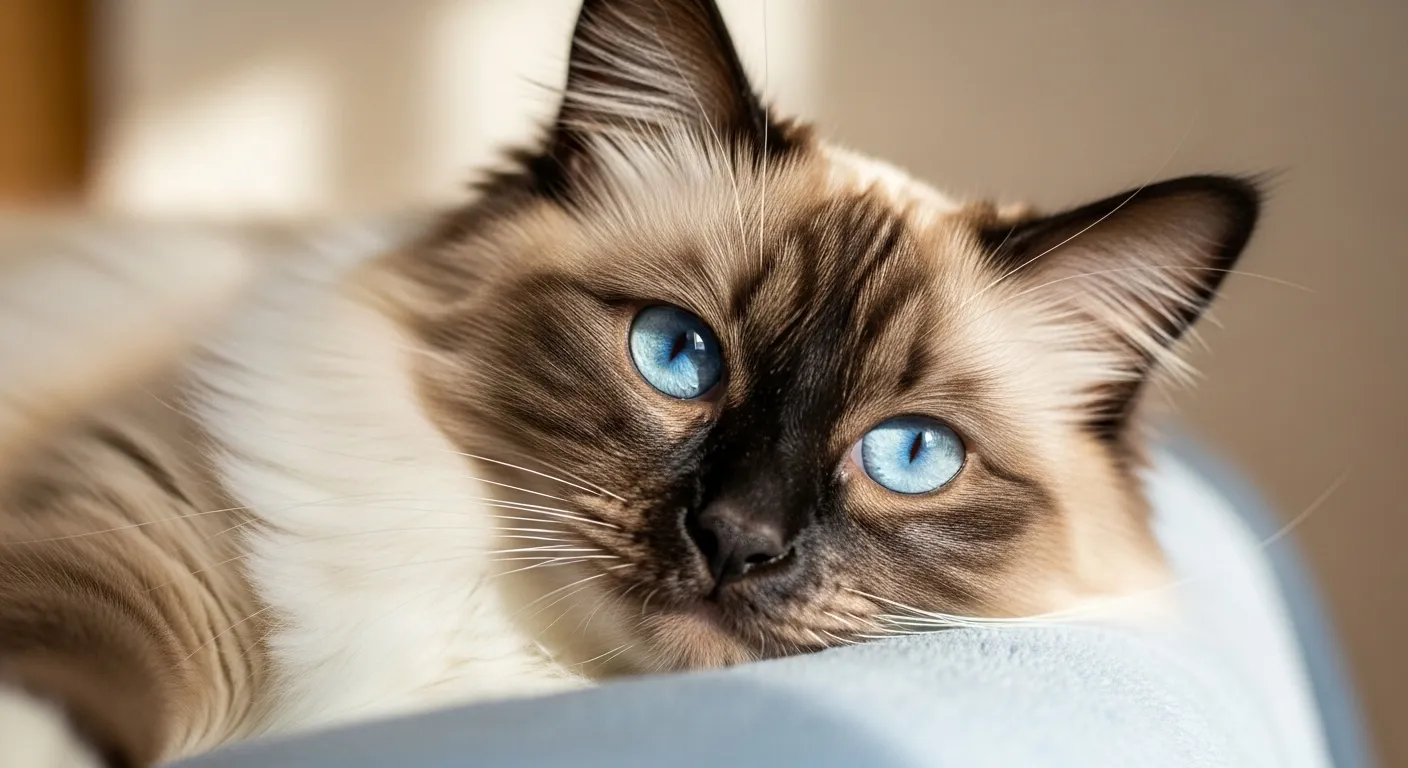Ragdoll cats stand out for their calm ways and big hearts. These large felines often melt into your arms like a soft toy. If you seek a pet that bonds deeply and fits into home life, read on. This guide covers their traits, daily needs, and answers to common questions. It draws from breed experts to help you decide if a Ragdoll suits your space.
Core Traits of Ragdoll Cats
Ragdoll cats show a mix of gentle and playful sides. They weigh 10 to 20 pounds as adults and reach full size by age four. Their semi-long coat feels silky and sheds lightly year-round, with more in spring.
- Affectionate Nature: Ragdolls crave touch and follow you room to room. They nap on laps for hours and greet you at the door.
- Docile Temperament: Pick one up, and it relaxes fully. This “ragdoll” effect comes from their trusting build.
- Social Side: They greet guests with curiosity, not hisses. This makes them safe around new faces.
- Quiet Demeanor: Ragdolls meow less than many cats. They use tail flicks or rubs to say hello.
- Playful Yet Calm: They chase toys in short bursts but tire fast. A 10-minute session keeps them content.
These traits stem from breeding in the 1960s by Ann Baker in California. She crossed cats for soft looks and easy vibes. Today, groups like the Cat Fanciers’ Association recognize them CFA Ragdoll Breed Standard.

How Ragdolls Fit into Family Life
Ragdolls thrive in homes with activity. They handle noise and movement well but need regular company. Alone for long hours? Pair them with another pet. Check our pet compatibility checker to see matches.
Good with Kids?
Yes, most Ragdolls play soft and patient. They let toddlers pat them without swats. Teach kids gentle holds to build trust. For tips on multi-pet homes, see how to introduce a cat to a dog.
Friendly with Other Animals?
Ragdolls share space with dogs and cats. Their low chase drive helps. Introduce slowly to avoid stress. If your cat follows you everywhere, a Ragdoll might join the habit—learn more in why does my cat follow me everywhere.
Apartment Dwellers’ Choice?
Their quiet ways suit small spaces. They climb low shelves, not high trees. Add a window perch for bird views.
Owners note Ragdolls stay kitten-like longer, up to five years. This keeps play alive without wild energy.
Daily Care to Match Their Easy Personality
Support a Ragdoll’s calm side with simple routines. They live 12 to 17 years with good habits.
- Grooming: Brush twice a week with a wide comb. This cuts tangles and spreads oils for shine. Trim nails monthly.
- Feeding: Give measured wet and dry food to hold steady weight. Extra pounds strain joints. Use our pet food safety checker for safe picks.
- Play Time: Wave feather wands daily. It burns energy and strengthens bonds. They fetch balls like dogs.
- Health Checks: Watch for heart issues like hypertrophic cardiomyopathy. Vet visits twice yearly catch early signs. If symptoms worry you, try our pet symptom checker.
Keep them indoors—their friendly streak draws strangers. Harness walks work for fresh air.

Answers to Top Questions on Ragdoll Cats
People often ask these based on search trends.
Do Ragdolls Like to Be Alone?
No. They bond tight and get lonely fast. Plan for play if you work shifts.
Are Ragdoll Cats Vocal?
Rarely. A soft chirp now and then, but no yowls at dawn.
How Trainable Are They?
Quite. Use treats for litter or tricks. Start young for best results. Curious about names? Our pet name generator has Ragdoll ideas.
What About Their Eyes?
Always blue, even in adults. This points to their Siamese roots.
For breed picks, take our pet breed finder quiz.

Ragdolls bring steady warmth to daily life. Their traits make them top picks for calm homes. Ready for one? Start with a breeder check or shelter visit. Share your thoughts in comments below.
